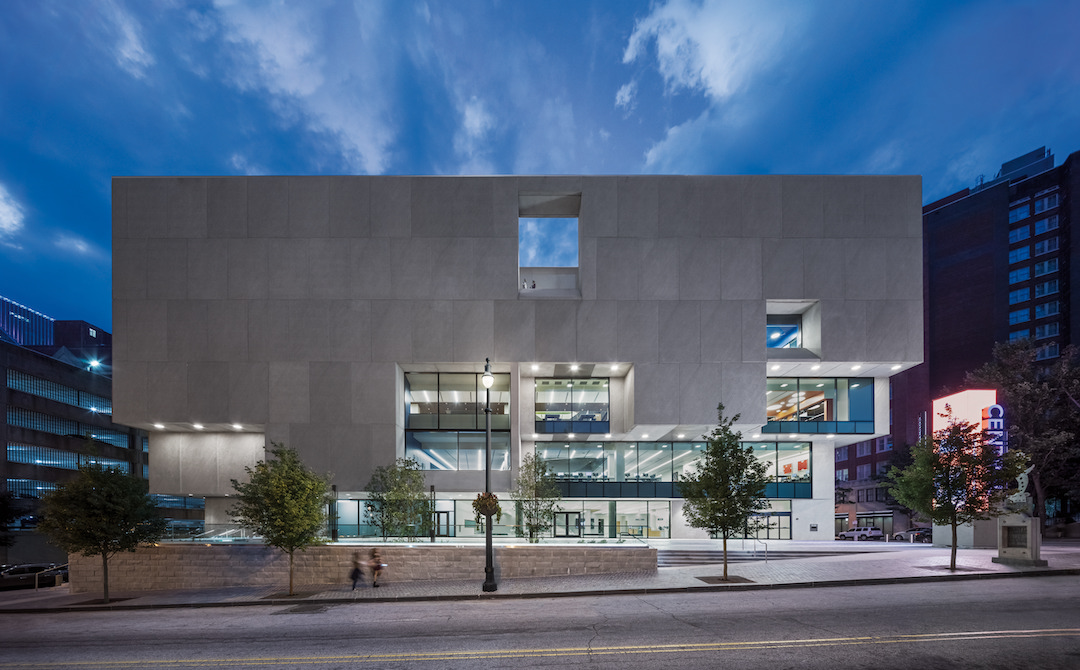Forty years after its original opening in 1980, Atlanta’s Central Library has reopened following a $50 million renovation project designed by Cooper Carry in association with Vines Architecture. The build team devised a plan to rehabilitate the eight-story building into a place that balances the original brutalist design with modernizing the space to better appeal to Atlanta’s next generation of library goers.
The team envisioned a design strategy to utilize technology; introduce additional windows; reallocate space; improve way finding; replace mechanical systems for greater comfort, efficiency, and sustainability; and activate the exterior plaza to create a more transparent, safe, accessible, and functional building from the outside in.

Other key considerations included creating more natural light, flexibility to support changing programs, and improved street-level engagement. The introduction of windows to existing recessed planes significantly improved daylight access, helping to create a brighter interior and a more welcoming presence.
A challenge of the library’s interior was that it was underutilized and difficult to navigate, leaving many of the original design signatures hiding in plain sight. The design team unearthed and put these elements on display, including a distinct sculptural staircase and waffle slab ceiling and skylights that occupy the center of the building by relocating the original central service elevator that was in the way. Opening up the core of the building had the effect of bringing in natural light to the atrium while serving as a smoke exhaust pathway, which was a necessary mechanical change to the building's life safety systems.
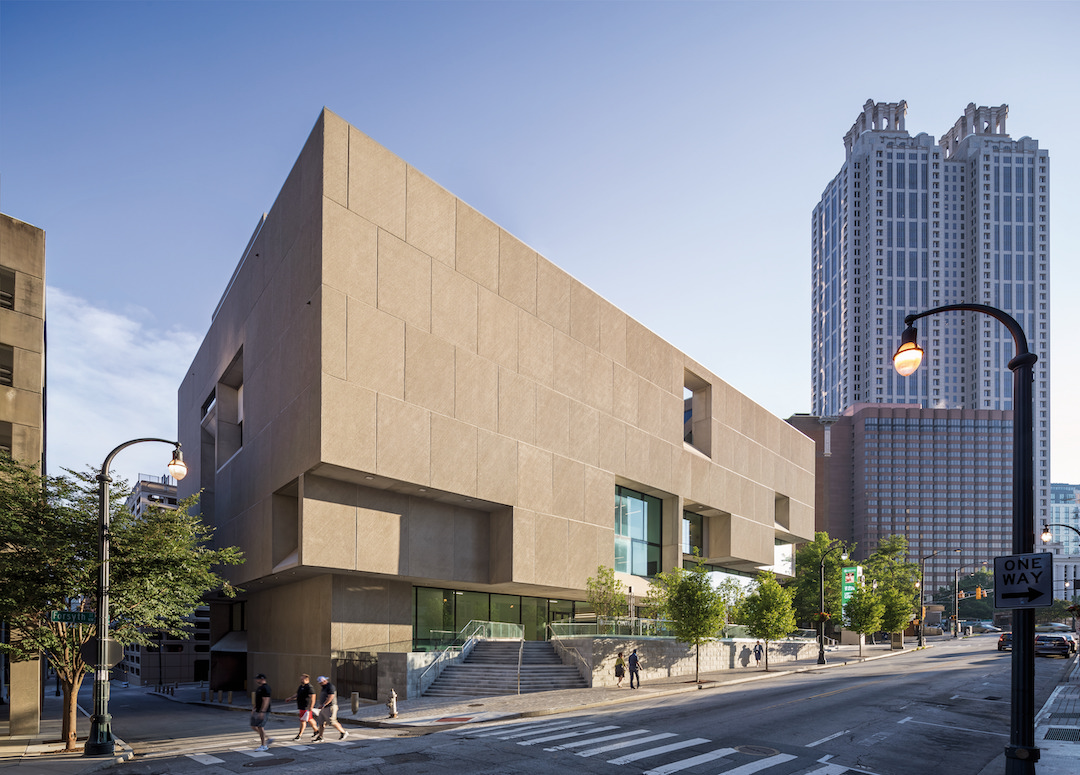
Visitors will discover the addition of comfortable gathering hubs that encourage library guests to move outside the confines of the traditional library on the previously underutilized fifth floor outdoor terrace. In the future, flex spaces like the terrace and the adjacent auditorium with telescoping seating and a large glass operable door could be used as an income-generating venue for events.

The library’s revamped exterior plaza will be activated with more lighting, video information displays, and spaces to meet and gather. The goal is to extend the library’s footprint into the urban fabric and draw outsiders in.
The design team worked with Fulton County Library System, in addition to design build contractors Winter-Johnson with Moody Nolan.
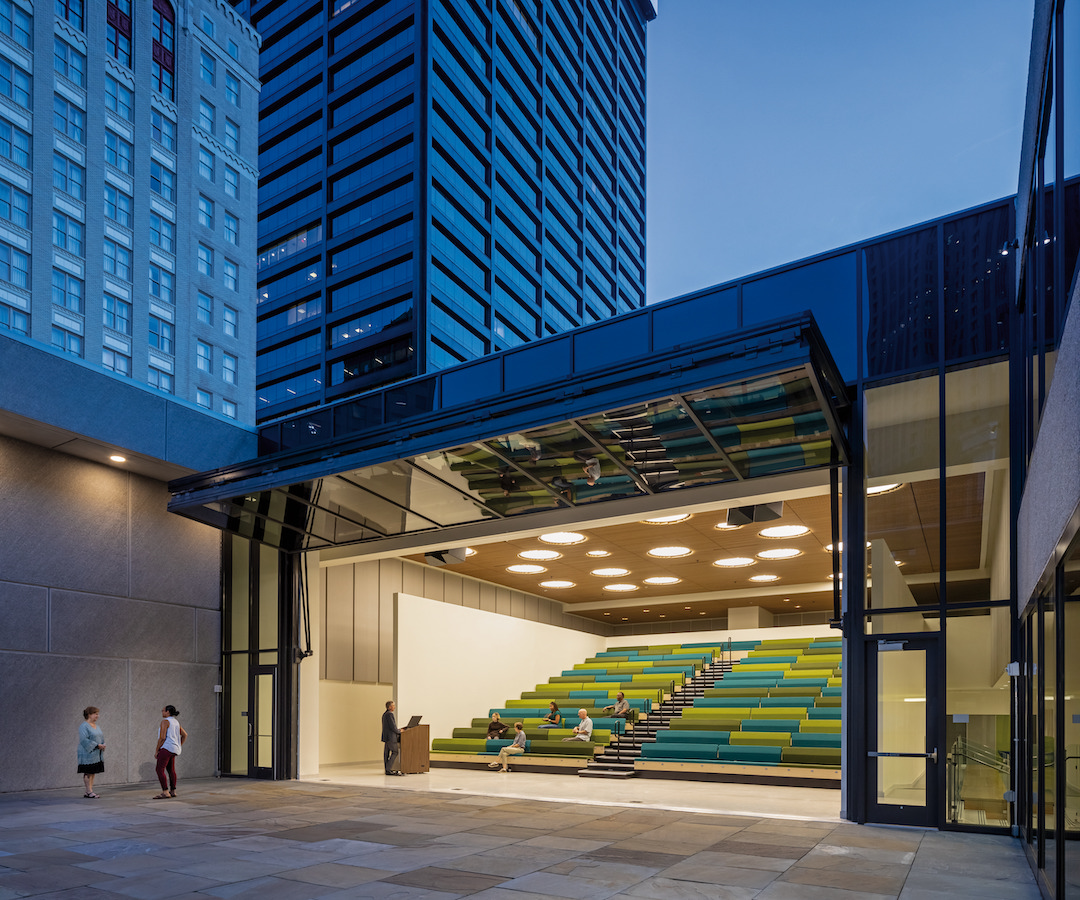
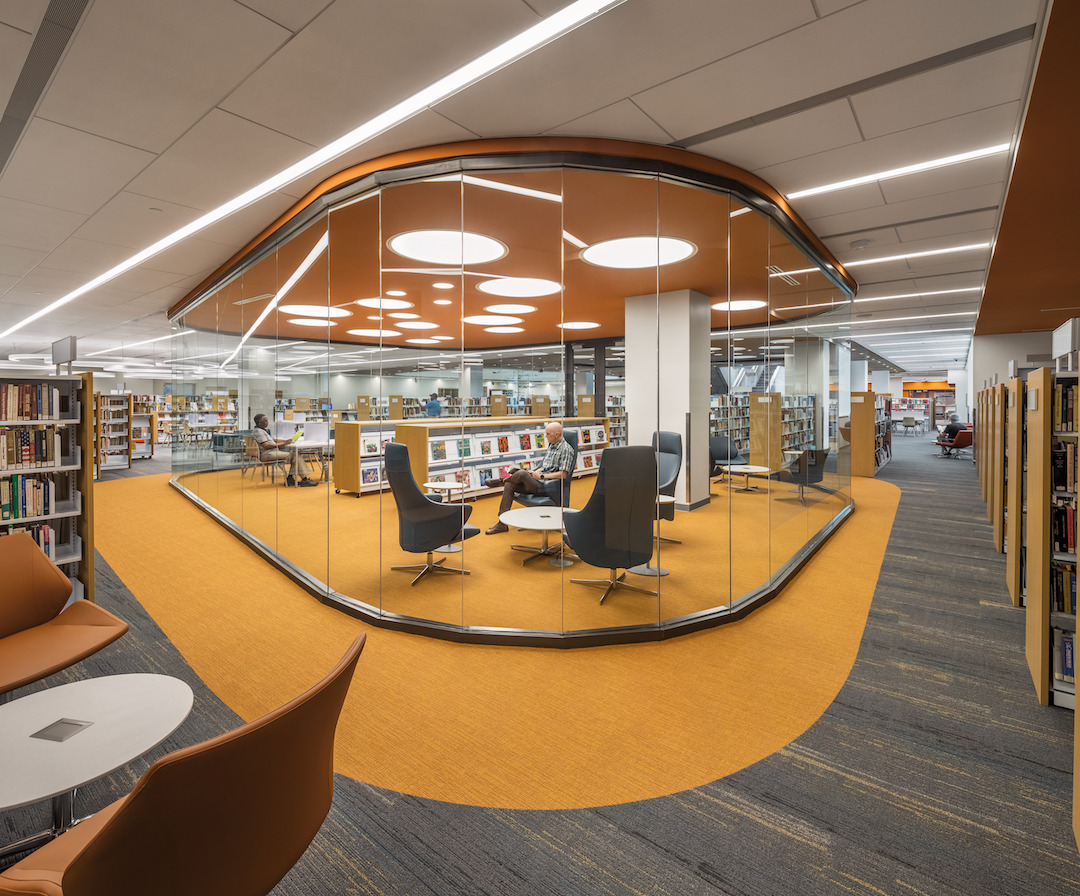
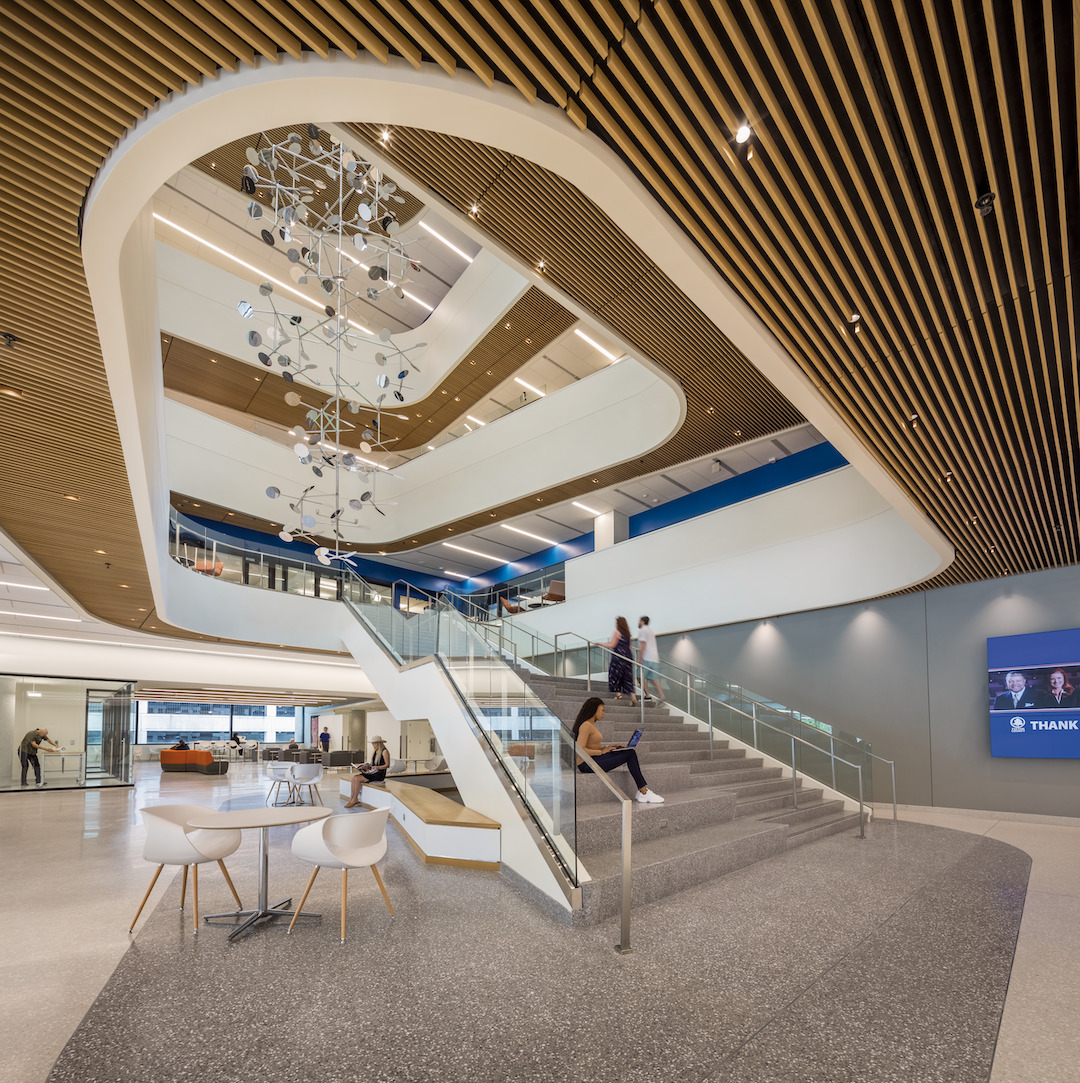
Related Stories
| Jul 18, 2014
Top Engineering/Architecture Firms [2014 Giants 300 Report]
Jacobs, AECOM, Parsons Brinckerhoff top Building Design+Construction's 2014 ranking of the largest engineering/architecture firms in the United States.
| Jul 18, 2014
Top Engineering Firms [2014 Giants 300 Report]
Fluor, Arup, Day & Zimmermann top Building Design+Construction's 2014 ranking of the largest engineering firms in the United States.
| Jul 18, 2014
Top Architecture Firms [2014 Giants 300 Report]
Gensler, Perkins+Will, NBBJ top Building Design+Construction's 2014 ranking of the largest architecture firms in the United States.
| Jul 18, 2014
2014 Giants 300 Report
Building Design+Construction magazine's annual ranking the nation's largest architecture, engineering, and construction firms in the U.S.
| Jul 7, 2014
7 emerging design trends in brick buildings
From wild architectural shapes to unique color blends and pattern arrangements, these projects demonstrate the design possibilities of brick.
| Jul 2, 2014
Emerging trends in commercial flooring
Rectangular tiles, digital graphic applications, the resurgence of terrazzo, and product transparency headline today’s commercial flooring trends.
| Jun 30, 2014
Research finds continued growth of design-build throughout United States
New research findings indicate that for the first time more than half of projects above $10 million are being completed through design-build project delivery.
| Jun 18, 2014
Arup uses 3D printing to fabricate one-of-a-kind structural steel components
The firm's research shows that 3D printing has the potential to reduce costs, cut waste, and slash the carbon footprint of the construction sector.
| Jun 16, 2014
6 U.S. cities at the forefront of innovation districts
A new Brookings Institution study records the emergence of “competitive places that are also cool spaces.”
| Jun 12, 2014
Austrian university develops 'inflatable' concrete dome method
Constructing a concrete dome is a costly process, but this may change soon. A team from the Vienna University of Technology has developed a method that allows concrete domes to form with the use of air and steel cables instead of expensive, timber supporting structures.


